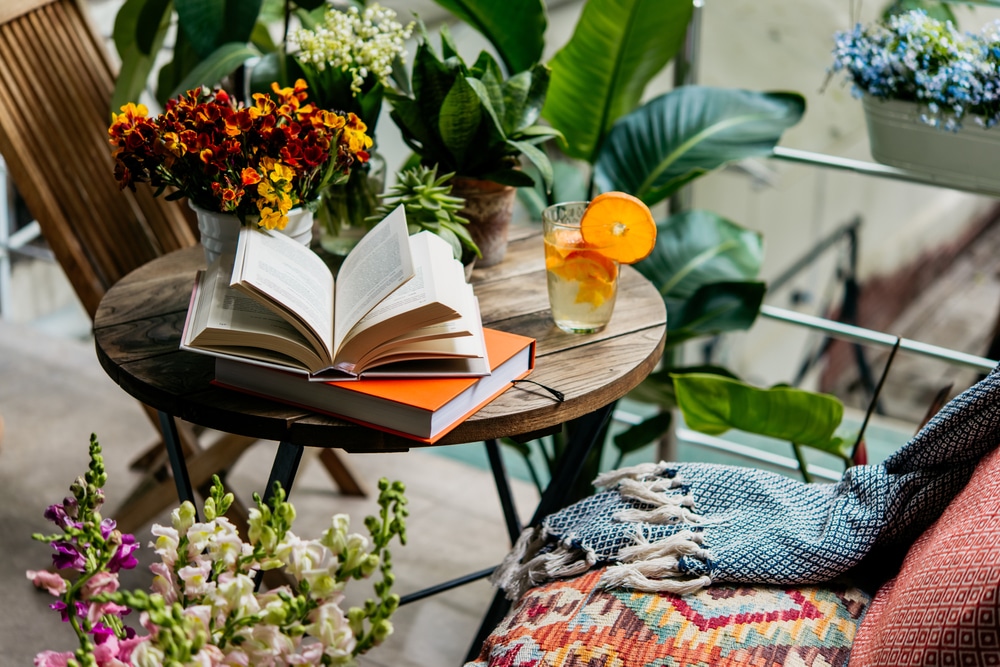I’ve heard a lot about the idea that certain plants can repel flies and mosquitos in the garden. It’s easy to find information online about it.
The thing is, I’ve had many of the recommended plants in my garden or containers on my balcony for years. Not to repel insects but just because I like the plants. Fragrant plants like lavender, basil, and marigolds are some of my favorites. But, I’ve also had plenty of flies, mosquitos and other insects in my gardens too and I have also used different natural bug sprays to repel flies.
Still, I get that there are some flying insects that aren’t fun to have around. Especially because they’re really annoying or can even cause damage. Indoors I use cedar balls and dried lavender flower sachets to deter clothing moths from my stored winter woolens and sweaters in my closet.
I still wondered about all those other plants that supposedly repel flies and mosquitos. So, I decided to do some research and get to the bottom of the idea that certain plants repel flies and other insects like mosquitoes in the garden. In this article, I’ll share some of the information I found.
Can Plants Really Repel Flies? The Science Behind It
The Myth Of Fly Repellent Plants
You’ll find plenty of sources online that list various plants that can deter flies in the garden. Most of them don’t specify what insects they’re referring to when they say “flies” (unless they specifically mention mosquitos). So, it’s hard to know for sure. The word “flies” tends to be a catch-all for almost any insect with wings, other than mosquitos or stinging insects like bees and wasps.
The theory is that the listed plants have strongly-scented foliage and insects don’t like the smell so they avoid them. So, including these plants in your garden helps deter flies and other unwanted visitors.
The Reality Of Fly Repellent Plants
When I tried to dig a little deeper and go beyond just the plant lists, I found a different story.
There has been plenty of research on plants to deter insects such as mosquitos. As well as tse-tse flies that transmit human illnesses. Plants have also been studied as a method to repel insect pests from stored grains and flour, and wool-based textiles.
What several studies have in common is that they use extracted essential oils from the plant in order to create concentrated insect repellants or fumigants for use in confined spaces. Other methods used in field studies involve: hanging fresh plant parts, using dry leaves, and burning fresh or dried plant leaves or bark to create aromatic smoke to repel the insects.
What was clear from my readings is that the use of plants to deter insects is far more complicated. It’s more than just planting the repellant plants in the garden or near a living space. Planting certain plants in your garden may not provide complete fly or mosquito protection. But incorporating them in high-traffic outdoor spaces like patios, decks, or around seating areas can enhance your outdoor experience.
How Mosquito And Fly Repellent Plants Work
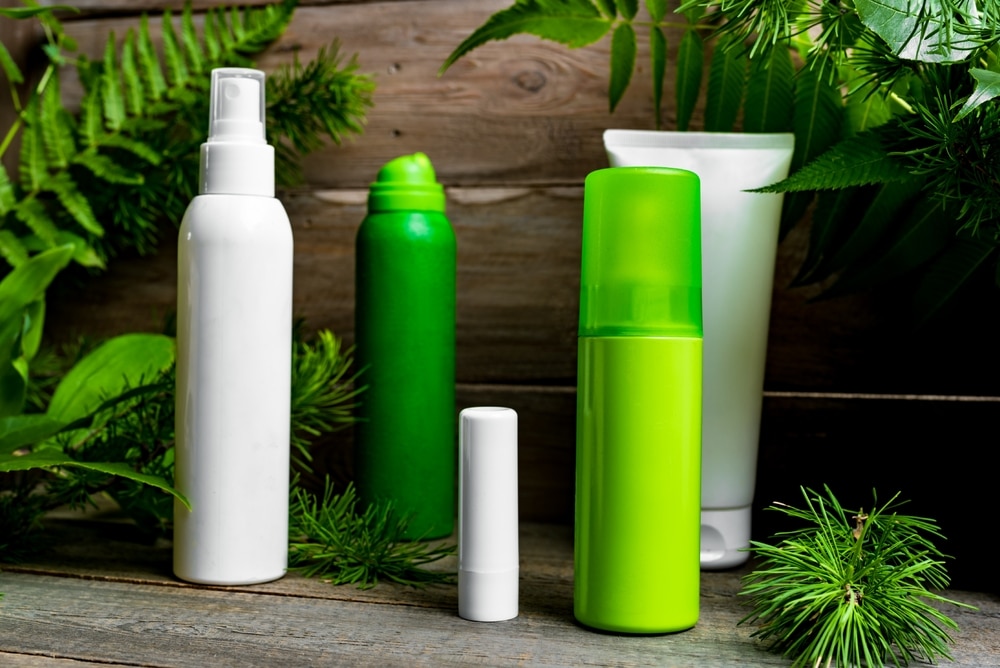
Research has shown that certain plants contain compounds that can be used to deter flies under controlled conditions or in enclosed environments. In particular, there has been a lot of research on using plants – or more precisely their extracts – to repel or kill insects.
Several studies look at the potential of concentrated plant essential oils. Particularly for use in products we call “insect repellents” for application to our skin. The basic principle behind many of these repellants is that their strong odor masks the scent that attracts the insect pests. Not necessarily that they’re a scent the insects don’t like.
For example, mosquitoes are attracted to the scent of our skin and the CO2 in our breath when we exhale. When applied to our skin, the volatile chemicals in an insect repellent evaporate and create a very thin chemical vapor layer over our skin. (That’s what creates the scent we can smell.) This layer masks the smell of our skin, making it harder for the insects to find us. Eventually the oils evaporate completely and stop creating an effective barrier. This is why repellents need to be reapplied after a certain amount of time.
More recent research on insect repellents suggests that certain scents may also interfere with an insect’s sensory mechanisms (i.e. their sense of smell). Thus preventing biting insects like mosquitoes or ticks from finding a host – like our bare skin!
After reading several of these studies, it’s clear that the scent of the plant needs to somehow be released. Or concentrated to have the desired effect to repel insects. The plant just being in the garden won’t create the deterrent. North Carolina State University states that there is no scientific evidence to support the idea of using garden plants to control the insects around a deck or patio.
The Bottom Line
It seems the practice of using plants around the deck or patio to deter flies and mosquitos doesn’t have the scientific data to support the theory. But, in the case of mosquitos, there are lots of other effective strategies that you can employ. These tend to focus more on preventing their reproduction to reduce their numbers in your garden.
Still, some of the plants often suggested to deter flies are attractive. Many give off a nice scent when you brush past them or after it rains. Lavender and rosemary are my favorites!
So, there’s no harm in adding them to your garden or in groupings around a patio. Even if there isn’t scientific evidence to support the idea of using plants to repel flies from your garden, you can always enjoy their soothing aromatherapy!
Enjoy Aromatherapy & Test The Theory of Plants That Repel Flies and Mosquitoes
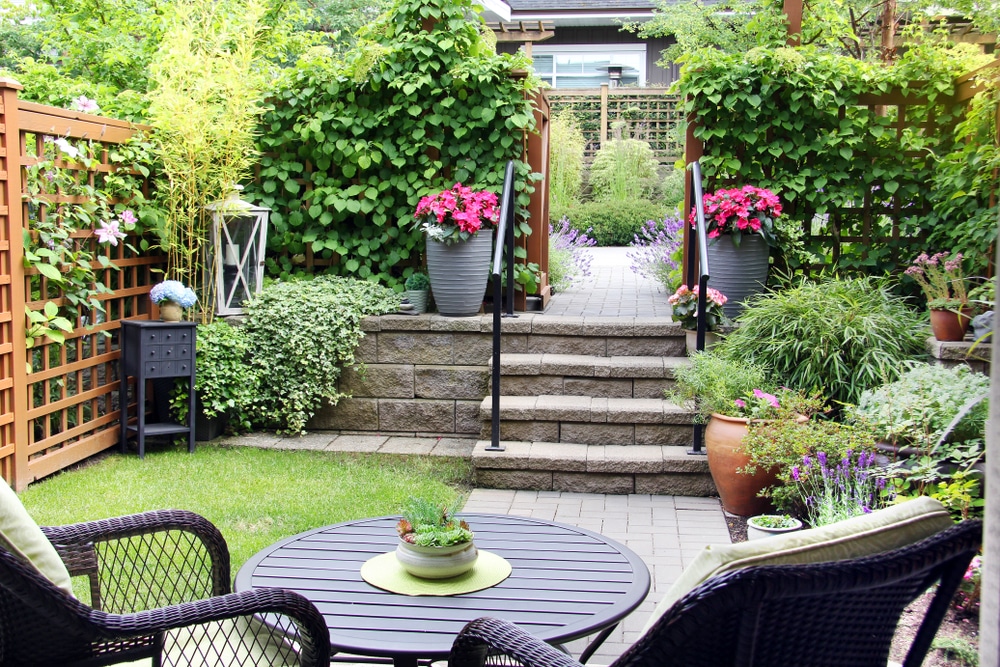
If you’d like to test the theory of the power of garden plants to repel flies and mosquitos, and enjoy some garden aromatherapy at the same time, give these fragrant plants a try:
- Containers: Plant fragrant plants in big containers by the door where you can brush the foliage to release their fragrance when you walk past
- Border Plants: Plant a low hedge of fragrant plants along the edge of a deck or patio to create a scent barrier
- Fragrant Posies & Bundles: Grow fragrant plants and take cuttings to hang in the doorways or inside
- Essential Oils & Sprays: Increase the power of your insect repellent plants by using additional fragrant sprays in bowls of potpourri (don’t apply directly to your skin)
Companion Planting And Fly Repellent Gardens
Many insects are beneficial to have in the garden. Such as hoverflies (syrphid flies or flower flies), lacewings, and parasitic wasps that help control aphids. Tachinid flies that control a wide array of pests including cabbage worms, cucumber beetles and corn ear worms. So, as gardeners, it’s a bonus to have these flies pay a visit, especially in the vegetable garden.
Many beneficial insects – those that help control garden pests like aphids and whitefly – look a lot like insects we’d rather not have around. Hoverflies look like small leatherjackets (wasps), and tachinid flies look like houseflies. So before you swat at flies that get too close, consider that they may be some of the good guys you want to have around in your garden!
While it’s not certain that plants can help repel flies and mosquitoes, they can attract beneficial insects. So it’s important to consider the overall ecosystem of your garden. For example, lavender and marigolds, which are often suggested for repelling flies and mosquitoes, also attract beneficial pollinators and insects to your garden that help control pests. These plants are perfect for both ornamental garden beds and areas like patios. Places where you want to enjoy the benefits of natural fly and mosquito control. If you want to control aphids and other garden pests, include some of these plants in your vegetable beds.
Top Plants With Fragrant Foliage
Having a few fragrant plants here and there looks nice and smells lovely.
These aromatic plants, when placed around decks and patios, look nice and smell lovely when the breezes brush through the foliage. And if they really are some of the best plants to repel flies around patios then that’s an added bonus!
Try placing containers of lavender, rosemary, or citronella near seating areas for both aromatherapy and potential natural insect control. Here are some of the most aromatic:
1 – Lavender
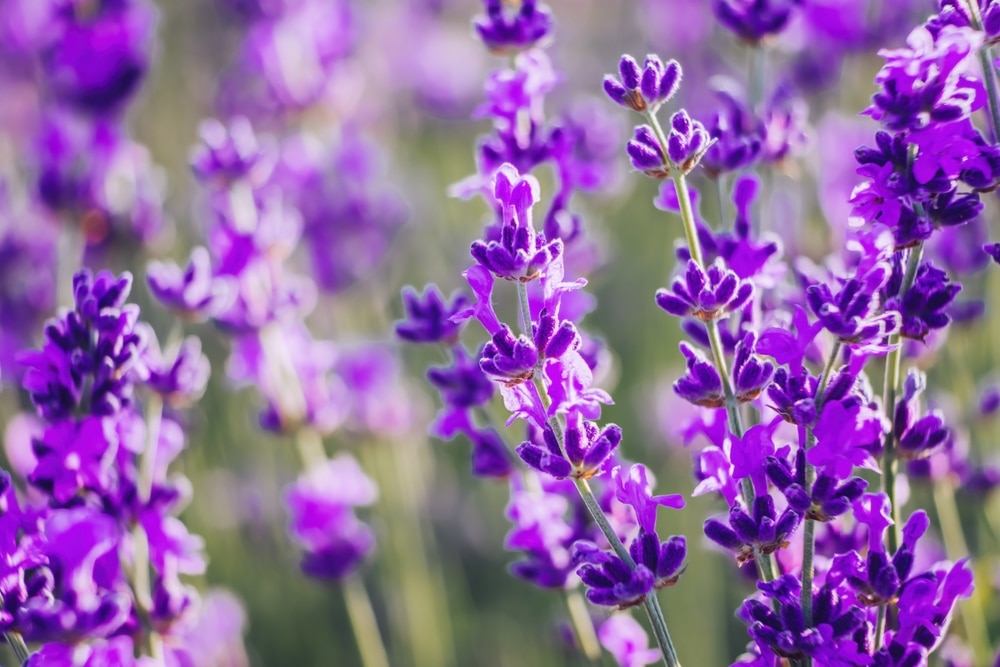
There are different types of lavender, including English (Lavandula angustifolia) and Spanish (Lavandula stoechas). The English lavenders have stronger fragrant flowers and foliage.
The flower heads are made up of several small flowers forming a spike at the end of the stem. These spikes can be cut just as the flowers start to open, and then made into a bunch to hang to dry indoors.
| Scientific Name | Lavandula angustifolia |
| USDA Hardiness zone | 5-10 |
| Type | Evergreen perennial |
| Mature Size | 1-3 feet (30 – 90 centimeters) depending on variety |
| Sun Exposure | Full sun |
| Soil Type | Well-draining |
| Watering Needs | Water deeply when soil dries out. Drought tolerant once established. |
2 – French Marigolds
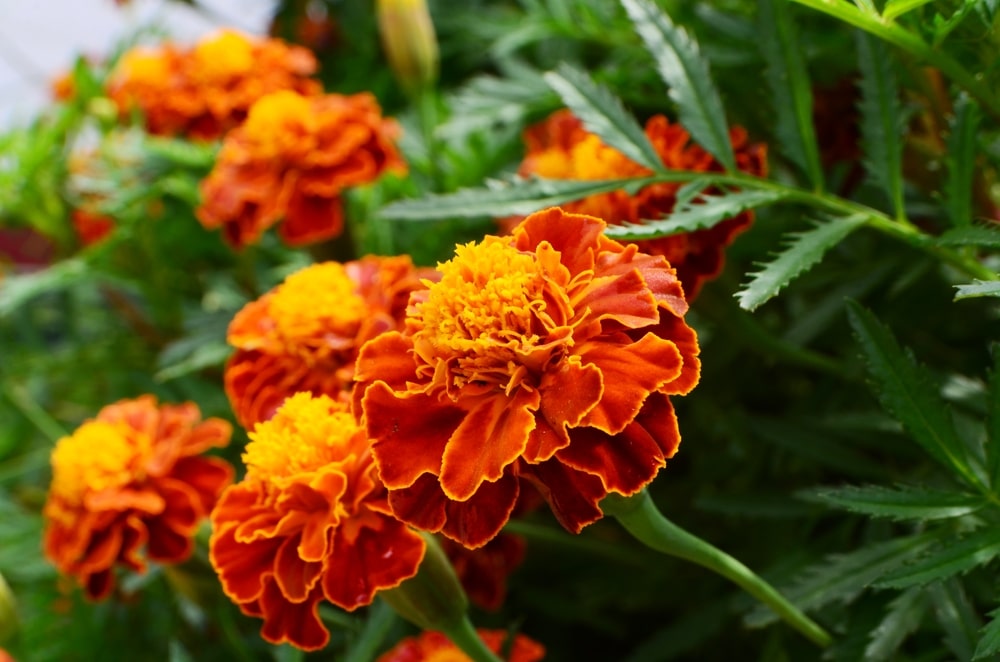
There are many different varieties of marigolds. French marigolds have smaller double or semi-double flowers in shades of red, orange and yellow. They have a bush growth habit with aromatic fern-like foliage.
French marigolds are one of the plants you can grow to attract beneficial hoverflies to your garden.
| Scientific Name | Tagetes patula |
| USDA Hardiness zone | 2-11 |
| Type | Annual |
| Mature Size | 6-12 inches (15-30 centimeters) tall |
| Sun Exposure | Full sun |
| Soil Type | Moist well-draining |
| Watering Needs | Allow soil to dry between waterings, then water deeply |
3 – Tansy
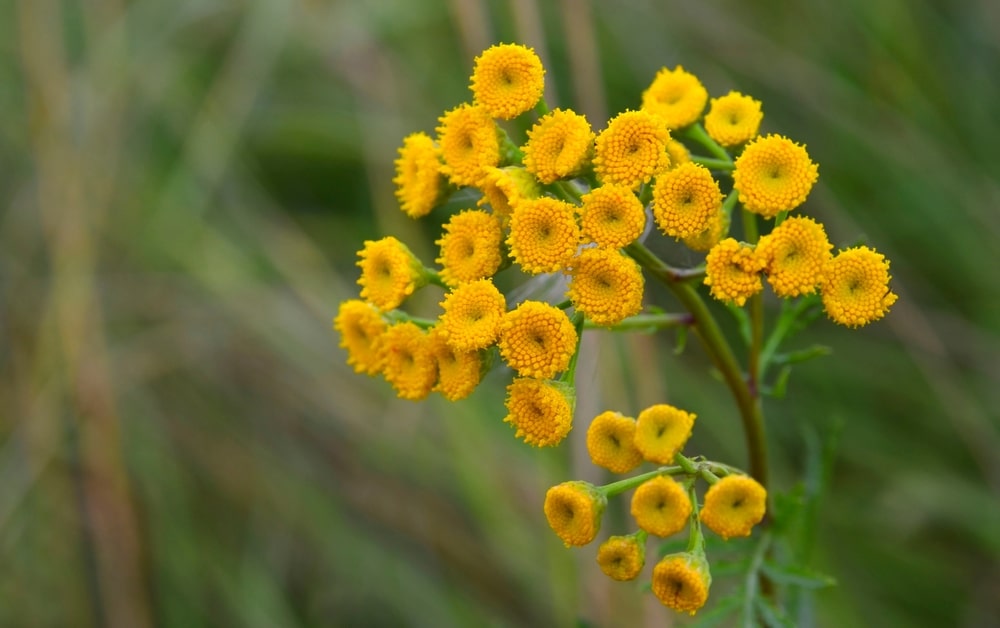
While tansy is an attractive flowering plant, it self-seeds prolifically and is on the invasive plant list in many regions. Check with your local invasive plant council before trying to plant it.
Tansy has delicate fern-like foliage that has a very strong smell that not everyone appreciates. It bears small yellow button-like flowers in late summer. Dead-head the flowers before they go to seed or else tansy will take over your garden.
Note: The plant is toxic to humans, pets, and livestock.
| Scientific Name | Tanacetum vulgare |
| USDA Hardiness zone | 3-8 |
| Type | Perennial |
| Mature Size | 3-4 feet (90-120 centimeters) tall |
| Sun Exposure | Full sun |
| Soil Type | Not fussy about soil type |
| Watering Needs | Drought tolerant once established |
4 – Mint
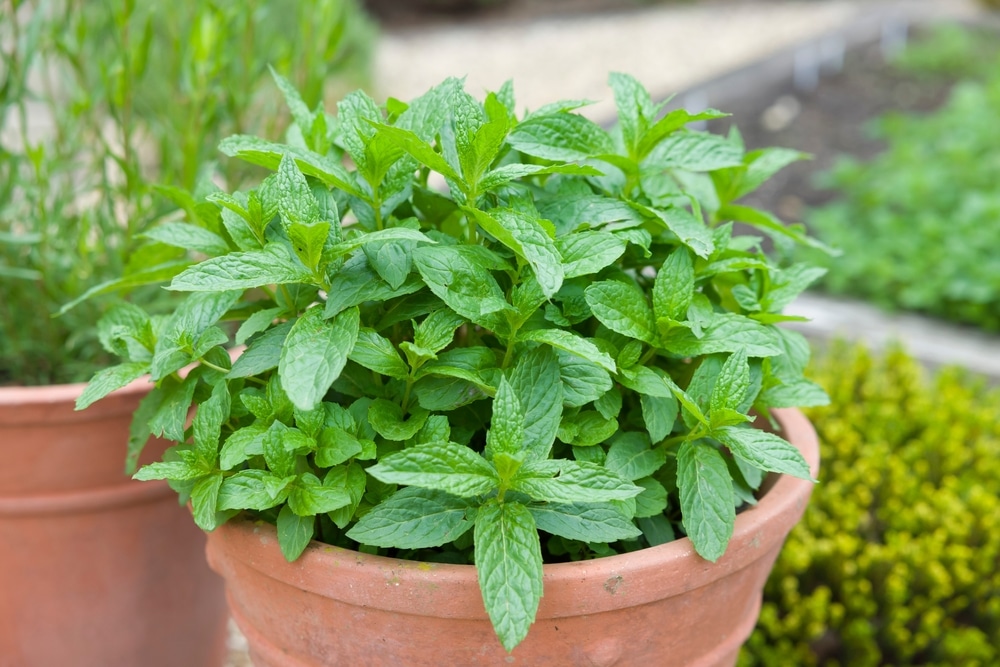
There are several varieties of mint, all of which have a fresh scent when the leaves are crushed. You can always tell a mint plant by its square stem. If you roll the stem between your fingers, you can feel the edges.
Mint plants spread aggressively through underground runners, and can take over a garden space. Many people choose to keep it contained by growing it in large containers or a dedicated raised bed.
| Scientific Name | Mentha spp |
| USDA Hardiness zone | 3-11 |
| Type | Perennial herb |
| Mature Size | 1-3 feet (30 – 90 centimeters) tall, depending on variety |
| Sun Exposure | Full sun to part sun |
| Soil Type | Moist well-drained |
| Watering Needs | Keep plants evenly moist. Tolerant of occasional drought |
5 – Rosemary
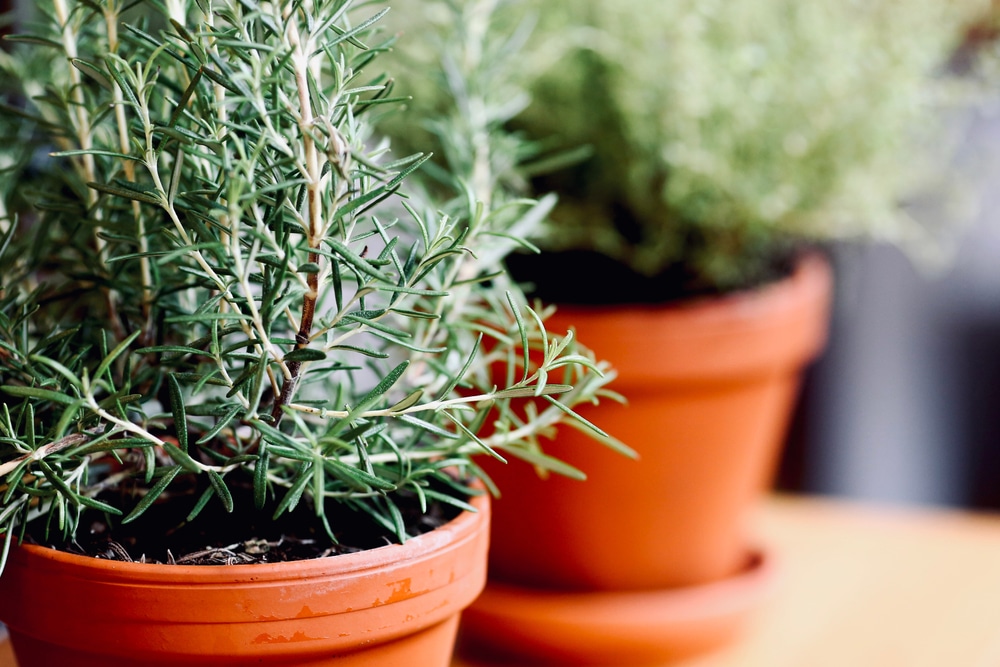
Rosemary is an attractive evergreen herb that looks a lot like lavender. It has gray-green thick needle-like leaves on upright woody stems. It bears clusters of small light purple-blue flowers in early summer. Because it isn’t cold tolerant, many people grow rosemary in containers and bring it inside to overwinter.
| Scientific Name | Salvia rosemarinus sp |
| USDA Hardiness zone | 8-10 |
| Type | Evergreen perennial herb |
| Mature Size | 2-6 feet (60-180 centimeters) depending on variety |
| Sun Exposure | Full sun |
| Soil Type | Well-draining |
| Watering Needs | Drought tolerant once established. |
6 – Sage

The sage family is a very large group of plants and includes the culinary herb as well as several ornamental flowering varieties. Not all salvias are edible but they all share the characteristic strongly aromatic foliage. Culinary sage is Salvia officinalis.
There are different varieties of culinary sage with foliage in shades of cream and pink (Salvia officinalis ‘Tricolor’) or bright yellow (Salvia officinalis ‘Aurea’).
| Scientific Name | Salvia officianalis |
| USDA Hardiness zone | 4-10 |
| Type | Perennial |
| Mature Size | 2-3 feet (60-90 centimeters) tall, depending on variety |
| Sun Exposure | Full sun |
| Soil Type | Well-draining |
| Watering Needs | Drought tolerant once established |
7 – Basil
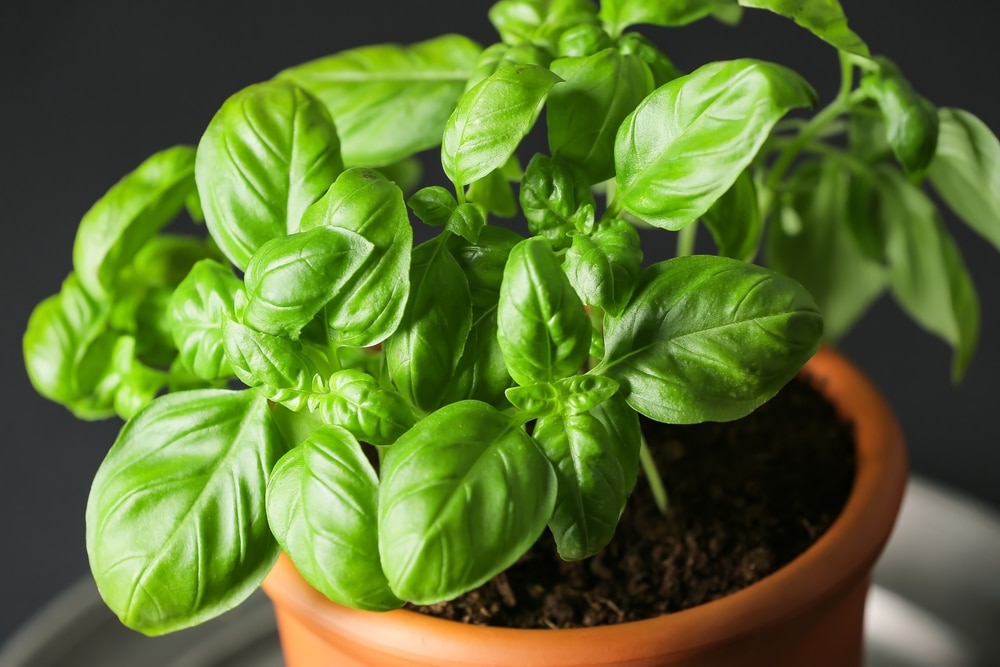
Basil is a familiar herb that’s in the same plant family as mint. It has the same square stem as all mint plants. There are several different varieties of basil, all of which are edible. The leaves are very aromatic and will release their scent at the slightest touch. It is a culinary herb most often associated with Italian cuisine but it originated in India.
Once the plants start to flower, the flavor of the leaves turns bitter. So if you want to use your basil for cooking, pinch back the growing tips once the plant reaches about 8 inches (17 centimeters) tall to encourage continuous leafy growth and prevent flowering.
| Scientific Name | Ocimum basilicum |
| USDA Hardiness zone | 10-11 |
| Type | Annual |
| Mature Size | 18-24 inches(45-60 centimeters) tall depending on variety |
| Sun Exposure | Full sun |
| Soil Type | well-draining |
| Watering Needs | Keep soil evenly moist |
8 – Bay Laurel
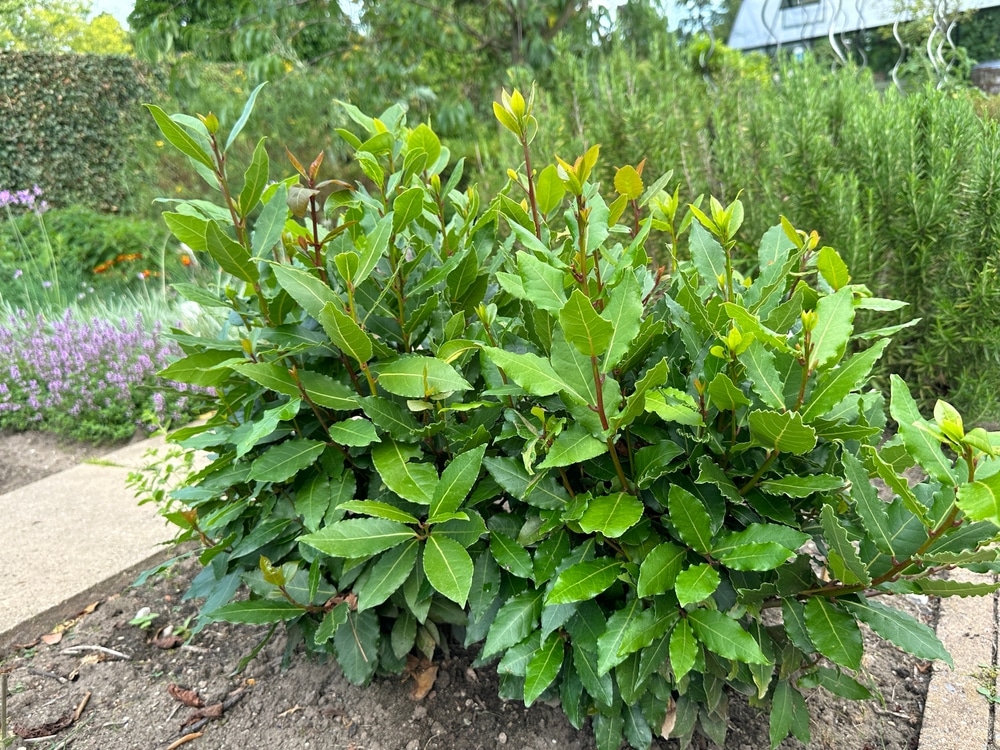
Bay laurel is an evergreen, grown as a shrub or small tree. Its dried foliage is what we find labeled as bay leaves in the herbs and spices aisle of the grocery store.
Bay trees aren’t cold hardy, so in many regions they can be grown in containers and brought indoors for the winter. They are fast-growing, so they will need repotting every spring.
| Scientific Name | Laurus nobilis |
| USDA Hardiness zone | 8-10 |
| Type | Evergreen perennial |
| Mature Size | 10-60 feet (5-30 meters) |
| Sun Exposure | Full to part sun |
| Soil Type | Moist well-drained |
| Watering Needs | Keep soil evenly moist |
9 – Eucalyptus (Silver dollar tree)
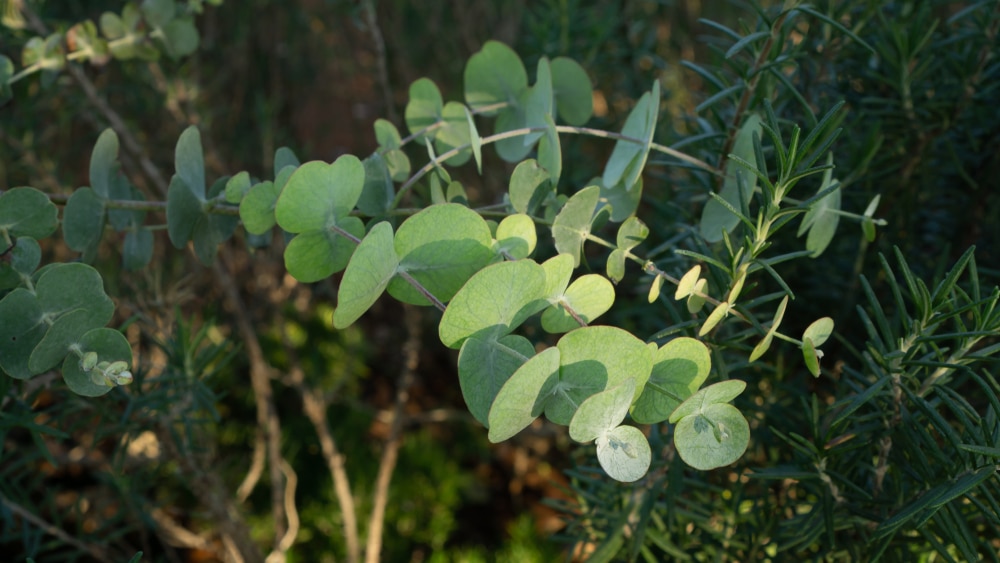
One of the biggest claims to fame of eucalyptus is that in its native Australia it’s the favorite food of koala bears! Some varieties of Eucalyptus can reach up to 60 feet (20 meters) tall in their native habitat.
Silver dollar Eucalyptus has silvery gray-green foliage with a pungent pine or menthol-like fragrance. When the plant is young, the leaves are round disc-shape (hence its common name) and clasp the stem at the base. As the shrub matures, the leaves become long and narrow with pointed tips.
Silver dollar Eucalyptus is not cold-hardy and is often grown in containers to be brought in over the winter. It can also be grown as a houseplant.
It should be noted that eucalyptus leaves are toxic to pets and people.
| Scientific Name | Eucalyptus cinerea |
| USDA Hardiness zone | 8-10 |
| Type | Annual orPerennial; evergreen or herbaceous |
| Mature Size | Up to 40 feet (13 meters) |
| Sun Exposure | Full sun |
| Soil Type | Well-drained |
| Watering Needs | Drought tolerant once established |
10 – Citronella
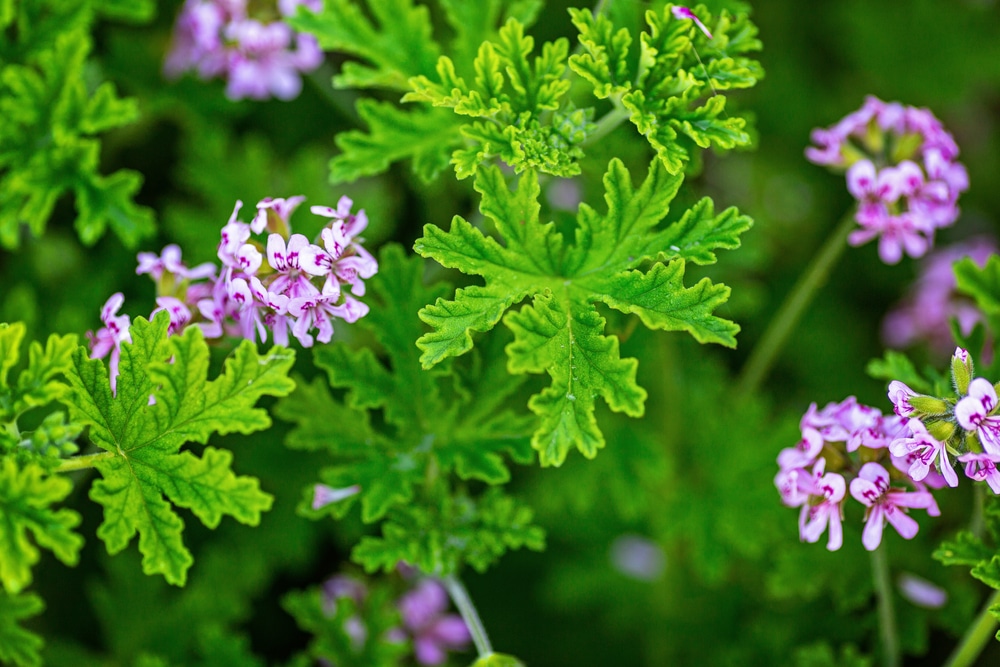
We’ve all heard of citronella candles as a way to repel mosquitos, and citronella oil is marketed for the same purpose. It’s unclear whether it’s just marketing or that these products actually work – but they do smell nice!
There are two plants that have the familiar citronella fragrance. The true citronella plant is a grass, Cymbopogon nardus or Cymbopogon winterianus. The other plant is a scented geranium, the citronella geranium (Pelargonium citrosum). The foliage of both of these plants has a strong lemony fragrance. However, the oils that produce the scent aren’t in high enough concentrations in the leaves to repel insects.
Citronella grass is a clump-forming perennial grass hardy in USDA zones 10-12. In colder zones it’s grown as an annual. It can grow up to 6 feet (2 meters) tall and 4 feet (1.3 meters) wide. The grass is the source of the concentrated oils used in citronella products such as candles.
The citronella geranium (or lemon geranium) is more versatile as a garden plant or even a houseplant. It can be grown in containers or in garden beds. It has deeply-lobed leaves and produces small pink flowers.
NOTE: Citronella geraniums are highly toxic to cats and dogs. Even brushing the foliage may cause dermatitis. Some people also experience skin irritations from brushing the foliage.
| Scientific Name | Pelargonium citrosum |
| USDA Hardiness zone | 9-11 |
| Type | Perennial often grown as an annual |
| Mature Size | 2-3 feet tall (60-90 centimeters) |
| Sun Exposure | Full sun to part shade |
| Soil Type | Well-draining |
| Watering Needs | Can tolerate short periods of drought. Prefers to be kept evenly moist |
11 – Sweet Woodruff (Sweet-scented Bedstraw)
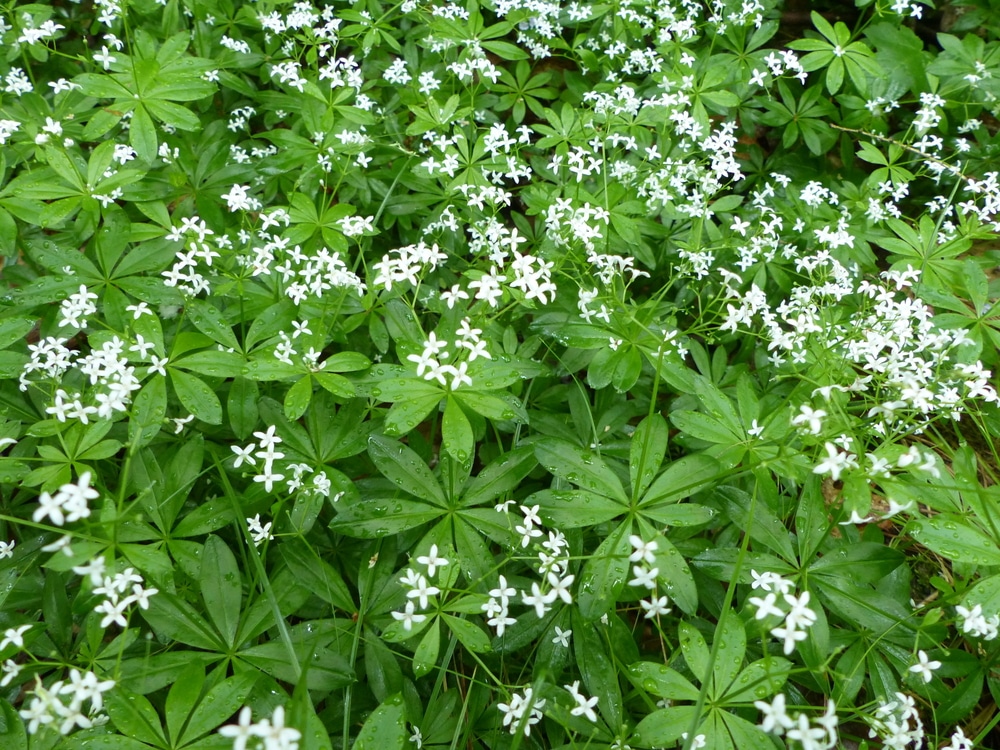
Sweet woodruff is a creeping ground-cover plant. Its long narrow leaves grow in “whorls” (grow in groups around the stem from the same growth node) along the stem. It bears small white star-shaped flowers in spring.
Sweet woodruff spreads by underground rhizomes and will form a dense groundcover and is sometimes considered invasive.
The foliage releases a pleasant sweet scent when crushed. The fragrance is more intense when the foliage is dried. In its native Europe, it was once used to stuff mattresses and pillows. There is a compound in the leaves called coumarin that can be used to deter moths and mosquitos.
| Scientific Name | Galium odoratum |
| USDA Hardiness zone | 4-8 |
| Type | Perennial, evergreen in warmer zones |
| Mature Size | 6-8 inches (15-20 centimeters) tall |
| Sun Exposure | Part to full shade |
| Soil Type | Well-draining |
| Watering Needs | Needs consistent moisture |
12 – Chrysanthemum
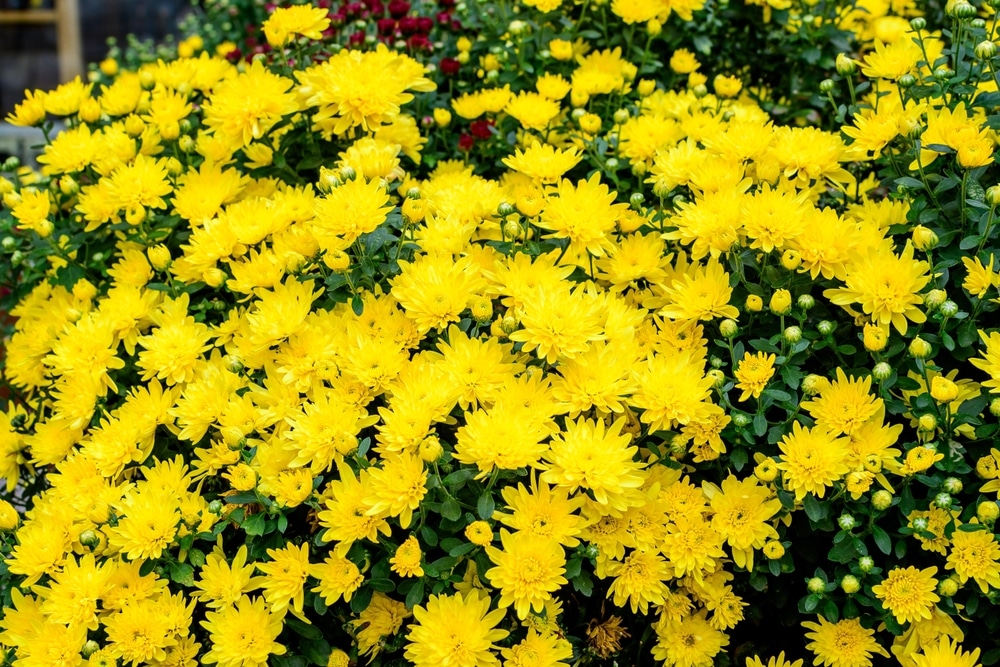
There are several different varieties of chrysanthemums, one of which is fondly referred to as garden mums. Some have flowers that look like small buttons or pompoms, while others have flowerheads made up of many long spidery petals. They flower in the fall, in shades of burgundy, bronzy orange, yellow, pink, light purple, and white.
Chrysanthemum flowers contain a substance called pyrethrin which is known to be toxic to many insects. Pyrethrin is extracted from the flowers to produce commercial insecticidal products.
| Scientific Name | Chrysanthemum x morifolium |
| USDA Hardiness zone | 5-9 |
| Type | Perennial |
| Mature Size | Up to 3 feet (90 centimeters) tall, depending on variety |
| Sun Exposure | Full sun |
| Soil Type | Moist well-draining |
| Watering Needs | Keep evenly moist |

